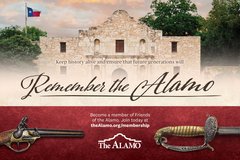Archaeological excavations continued in three units during the week of December 9 through December 13. Two excavation units fall within the footprint of excavations that were conducted in 1995. The purpose of these two units is to locate the base of the foundation, and also to examine the condition of a metal plate what was inserted in the wall in 1995 to help prevent rising damp. Information gathered will help the architects determine if the metal plate successfully stopped rising damp, and if there are any negative affects on the wall from its presence.
Archaeology Update — Intact Floors Found at the Exterior of the Church

Excavations within the interior unit continued to encounter sand that was used to backfill the 1995 excavation units. No artifacts have been encountered within the sand. On the exterior, the archaeologists are encountering the backfilled soils from the 1995 excavations. These appear to have not been screened in 1995, therefore the current investigation is recovering a high density of cultural material. The artifacts are in mixed context, although some are interesting, they do not provide the same amount of information that artifacts recovered from intact soils could tell us.
As the excavations have continued, the archaeologists have found evidence of plastic sheeting that was placed along the south wall of the Church prior to the completion of the excavations in 1995. This information was passed on to the historic architects so they can better understand the current condition of the foundation.

Additional excavations continued in Excavation Unit 3, also located on the exterior of the south wall of the Church. Although the area has been disurbed by various utility installations, it appears that the compacted caliche floors have remained in place.
During the previous week, the archaeologists were able to identify one floor. A second floor was identified the following week. These have been documented, mapped, and laser scanned to allow for future interpretation.
After recording all the details needed, the archaeologists worked to remove the floors, keeping the soils from each floor layer separate to be able to record what artifacts are associated with each. The second floor appeared in two levels, and was incredibly compact. Few artifacts were observed in each floor. Considering that this unit location is outside of the Church, it is very interesting and exciting to see prepared floors.


In addition to excavations, the archaeologists were able to work on the backfilling of Excavation Unit 10, located on the exterior of the west wall of the Long Barrack. During the investigation, sections on the foundation were identified as needing some care prior to filling in with dirt. The Alamo Conservator completed emergency conservation efforts on the foundation, allowing for the archaeologists to move forward with backfilling later in the week.
Archaeological work associated with the installation of safety bollards around the perimeter of the Alamo Plaza also continued. Much of the work focused on removing a couple more inches of road base. It was found that the current road base would not meet the compaction requirement for the installation of the bollards. By excavating just a couple addition inches, new soils could be reintroduced and compacted to meet the requirements.
At the north side of the Plaza, workers concentrated on cutting mortar, removing flagstone, and breaking the underlying concrete. The concrete is set to be removed the week of December 16.
Archaeological work for both projects will continue into the week of December 16 through December 20. Both field crews will be taking a holiday break, with a portion resuming the week of New Year’s.




